SpeakableCassie’s Ominous October Spookathon – Part 4
Happy Halloween to all the boils, ghouls, and non-boo-nary people out there! It’s that terrifyingly fun time of year once again when I celebrate both the best and the worst that horror gaming has to offer. It’s also that time of year when I continue my failed attempts at coming up with a spooky greeting that is also inclusive of non-binary folk! Hell, at least “non-boo-nary people” is better than that “non-binary poltergeists” line I used in part 2… But I digress.
By this point, you’re likely already familiar with the core concept of the Ominous October Spookathon, so I’ll try to keep this brief. Thanks to former YouTube gaming group Super Best Friends Play and their famous horror series “The S**tstorm of Scariness”, I was inspired to begin my own personal gaming event. Within it: I attempt to play through as many horror games as possible —from start to finish— within the confines of that most haunted of months: October.
The original Ominous October Spookathon event took place in 2018, and you can read all about it right here! Utilizing a small bingo card of 12 separate horror games, I had a wonderful time across both indie and AAA experiences alike, culminating in 7 completed titles and a whole menagerie of terrifying memories!
Ominous October Spookathon II: Double Feature Sickture Show, stepped things up in regards to both size and quality. Having taken place in 2019, it featured 20 games on its card, of which 12 were completed. It also marked the first year that my fiancée PrincessLilyMTG took part, making it extra special! If you want to hear our thoughts on such classic horror escapades as Bloodborne, Eternal Darkness, and Siren: Blood Curse, then look no further than this hyperlink right here!
Then came the Ominous October Spookathon III: Once Upon a Time in Nightmareville, which I wrote about just a few weeks ago at this link here. Featuring the thrilling highs of Dead Space and Silent Hill: Shattered Memories, juxtaposed against the horrifying lows of Alone in the Dark (2008) and F.E.A.R. 3; The third Ominous October was our greatest roller-coaster yet, with 13 games completed from a total of 25.
But now, the fourth event has come out to play…
Welcome —finally— to The Ominous October Spookathon Part IV: The Final Chapter!
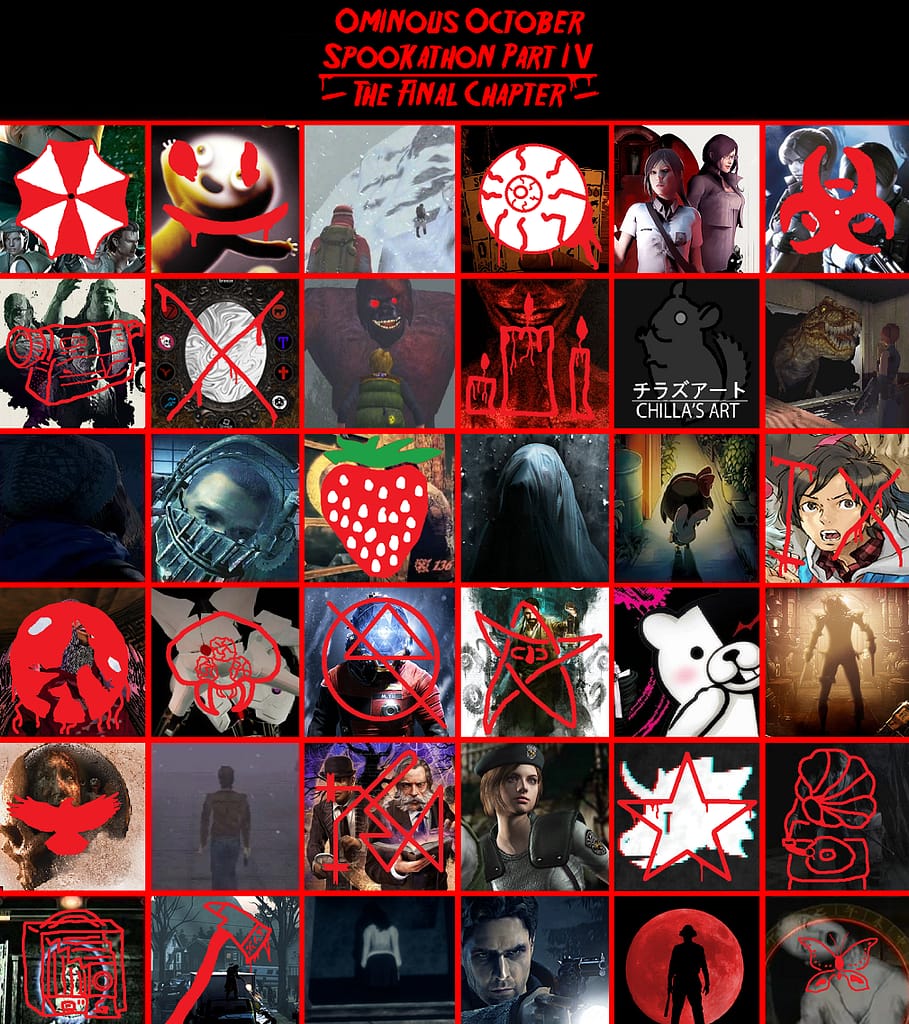
With the largest bingo card yet at a grand total of 36 horror experiences (of which a monumental 18 were completed), 2021’s event was truly humongous! It offered a vast amount of variety in regards to both genres and styles and was nothing if not scary. So what are we waiting for? Let’s memorize our hiding spots and ready our weapons… It’s time to dive right in!
Resident Evil: The Umbrella Chronicles
& Resident Evil: The Darkside Chronicles
Row 1, Column 1, & Row 1, Column 6
Time Played: 18 hours, 12 minutes
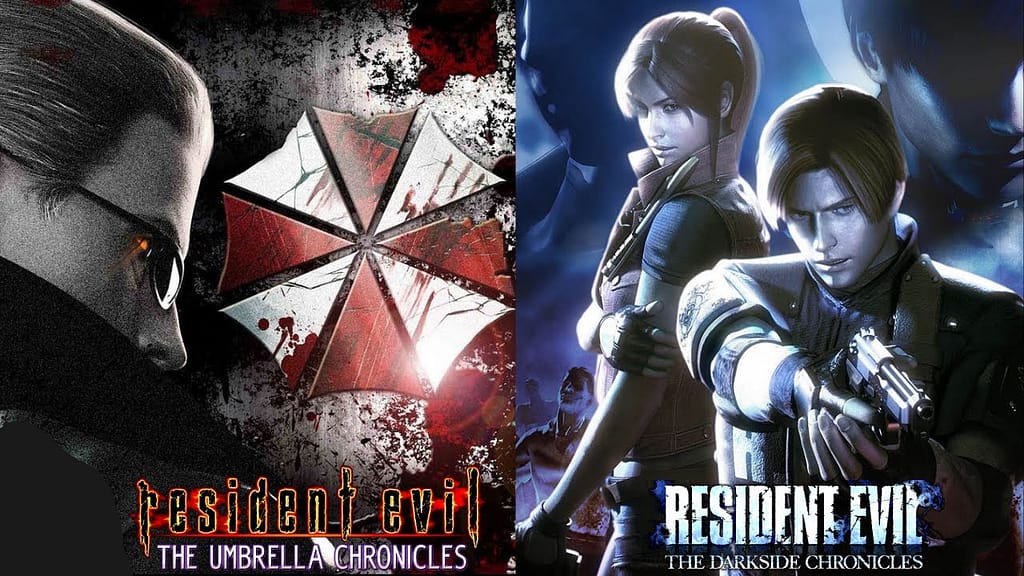
What better place to start than at the very beginning? Ominous October Spookathon 4’s first two games were played back to back and were both spin-offs of the Resident Evil series. If you’ve ever read one of my articles before then, you’ll already know that Resident Evil is my favourite video game franchise of all time, and I adore just about everything it has to offer. Thankfully, the Umbrella and Darkside Chronicles Wii games are no exception!
Both of these spin-offs recount various stories from the mainline Resident Evil games whilst expanding upon a number of events that the main entries rarely touch upon. Umbrella Chronicles, for example, recounts the stories of RE0, RE1, and RE3, whilst also showing us the subsequent downfall of Umbrella, An event that was previously referenced in RE4 but never actually shown. Darkside Chronicles, on the other hand, re-treads the tales of RE2 and RE – Code: Veronica, with an additional story based around Leon Kennedy and Jack Krauser’s first mission together — Another event that was spoken about in RE4, yet never seen.
So what makes these games so special? Well, that would be their genre! With much faster pacing and an emphasis on action; Umbrella and Darkside are not Survival Horror games. They’re actually light-gun games in the style of House of the Dead and Time Crisis! From a first-person perspective with on-rail movement, you take on the role of multiple RE protagonists, gunning down hundreds upon hundreds of zombies and Bio Organic Weapons in the process.
With deeply satisfying gun variety, good fast-paced storytelling, and plenty of iconic RE locales to fight through: These games are genuinely excellent. They are true diamonds in the rough for the light-gun genre and are hidden gems within the enormous library of the Nintendo Wii. Playing through them in co-op mode with Lily was an absolute delight from beginning to end.
In fact, when asked for her opinion, Lily proclaimed the following:
“Though they often re-tread elements of the mainline stories that we’ve already seen a fair few times before, both of these games add to the narratives in genuinely engaging and interesting ways. I was a massive fan of both, but particularly Umbrella Chronicles due to its amazing upgrade system and the fact that it covered the RE games that I care most about. The graphical quality also far exceeded what can usually be expected from the Nintendo Wii console, and both performed very well; Holding a nice steady framerate at all times.”
Project Zero
& Project Zero II: Crimson Butterfly
Row 6, Column 1, & Row 6, Column 6
Time Played: 19 hours, 46 minutes
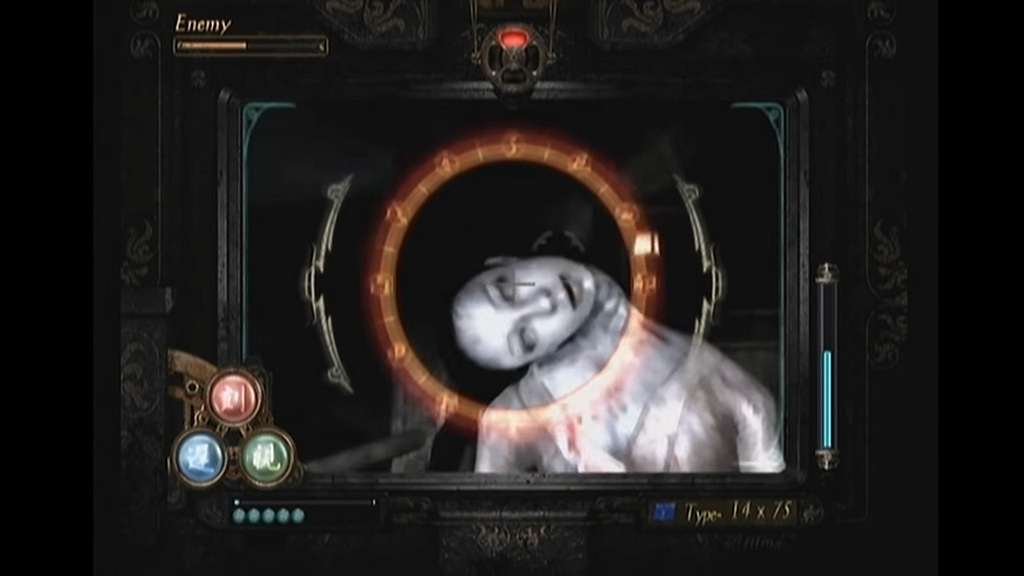
Moving swiftly on to another duo of squares that represent two games from the same series: Project Zero 1 & 2, also known as Fatal Frame 1 & 2 in the United States. This is another franchise that is near and dear to my heart, having scared me senseless as a child and helped spur on my love of horror. I must’ve been about nine years old when I first picked up Project Zero 2 from the bargain bin of my local Gamestation store. Unfortunately, the opportunity to play through the rest of the series never really presented itself… Until last October.
Standing tall alongside the likes of Resident Evil, Silent Hill, and Eternal Darkness, Project Zero is a classic survival horror game in every conceivable way. Static camera angles, limited resources, complex level designs, and carefully paced scares all make for a fantastic and effective horror experience. Yet it’s actually the overall atmosphere and narrative quality that makes Project Zero stand out from the rest.
Deeply entrenched in Japanese mythos —primarily based around locales, rituals, and ghosts from the Edo Period— each game pits you against a perturbing location haunted by a large variety of spirits. As Miku Hinasaki, the first game sees you search for your missing brother throughout the cursed Himuro Mansion, whilst Project Zero 2 follows Mio Amakura and her attempts to free her twin sister from the ever tormentful Minakami Village.
In order to endure these ordeals, each protagonist becomes armed with an antique device known as the Camera Obscura, A tool capable of capturing the souls of the dead. By doing so: Each spirit becomes weakened until they no longer exist in the waking world. It can be loaded with various types of film, upgraded with unique lenses, and can even help the player sense when evil or passive ghosts are roaming nearby.
Legitimately scary and deeply enjoyable: The Project Zero series is technically still being supported to this day. The fifth game, (Maiden of Black Water), had a remaster not too long ago, and the fourth game, (Mask of the Lunar Eclipse), is finally getting an English localisation with graphical enhancements in early 2023; Almost 15 years after its original Japan-only release!
As a matter of fact, I had so much fun playing through these first two games for the Ominous October Spookathon that I actually went on to play every other game in the series right after! I even modded a fan translation of the fourth game into an emulator, just so I didn’t miss out on it! I’d recommend the franchise to any given horror gamer due to its excellent ambience, superb storytelling, and constantly entertaining gameplay. I really can’t recommend the series enough.
The Outlast Series
Row 2, Column 1
Time Played: 14 hours, 49 minutes
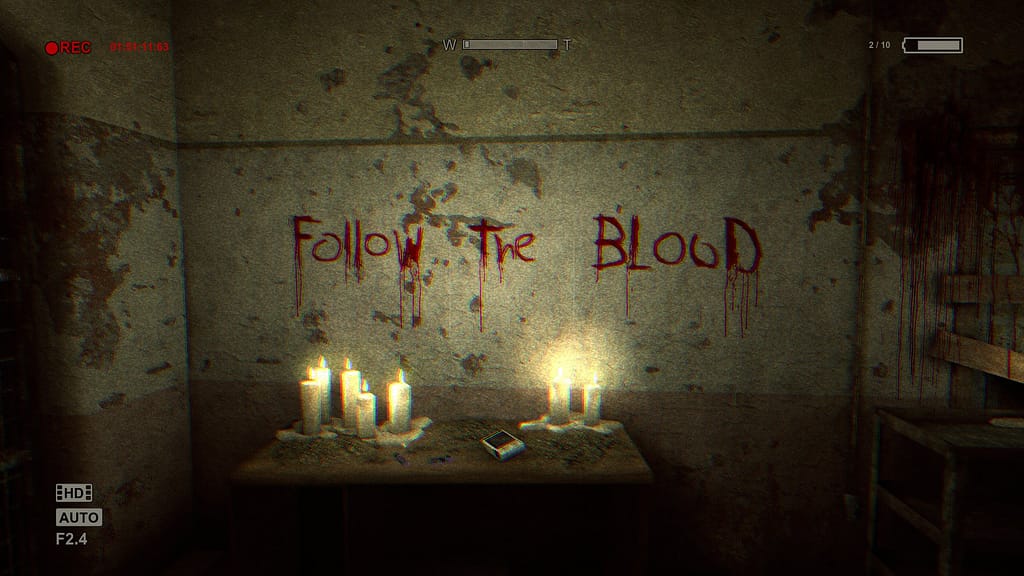
With a much more claustrophobic setting and an extremely screwed-up storyline: Along comes the Outlast series — consisting of the original game, its Whistleblower expansion, and an outright sequel in the form of Outlast 2. I enjoyed all of these games when they first came out, but this subsequent playthrough resulted in far more teeth-grinding and general boredom than I had anticipated, much to my disappointment…
Outlast as a series feels reminiscent of a found footage slasher movie, thanks to its film-grain heavy camcorder perspective, unsettlingly restrictive night vision system, and an intense feeling of vertigo that accompanies each major chase sequence. They’re linear games, but they rely on a lot of deliberately disorientating design philosophies in order to make you feel lost or reluctant to progress.
Countless pursuers stand before you at each and every turn, who will stop at nothing to kill you if they get the opportunity. Between Richard Trager and his rusty surgical scissors, Frank Manera and his handheld electrical saw, and Marta the Executioner with her mighty makeshift pickaxe: Each major antagonist feels distinct and horrifying in ways that you’re incapable of preparing for… But I think that was part of the problem this second time around.
Each of these games plays well. Their levels are intelligently designed, and their stealth mechanics feel tactical; They didn’t manage to reinvigorate the hide-and-seek horror subgenre by doing nothing right, after all! But something about Outlast’s in-your-face gore and viscera feels far less effective a second time around. Perhaps it’s because I knew what was coming (thus removing the shock factor), but I have to say that some key scenes felt needlessly OTT when they could no longer rely upon the element of surprise.
There were only so many gross-up shots and uncomfortable moments that I could sit through before it became ineffective. From fingers being cut off to cannibals devouring people in excessive detail to even just being in the same room as a vile paedophilic Priest character… Eventually —and particularly due to some borderline transphobic commentary on genital mutilation within the expansion— it felt blatant that Outlast was trying too hard to shock and appall its players. Ultimately, the sheer relentlessness of it all ended up circling right back around to a point where it felt wholly unimpactful once again.
Imagine encountering a ghost in real life. Pretty scary, right? Now imagine encountering about a thousand ghosts between dusk and dawn. It’d still be scary, of course, but about five hours into it, you’d likely feel a tad irritated and start yearning for a break… Now, imagine seeing the exact same thousand ghosts a few years later, all doing the exact same things, filling a whole night with tedium. Well, that’s Outlast’s problem on a revisit: It’s just OTT enough to feel inefficacious a second time around. So here’s hoping that the upcoming Outlast Trials feels fresh and well-paced enough to produce the desired effect…
At least within a first playthrough.
Shadows of the Damned
Row 3, Column 3
Time Played: 6 hours, 14 minutes

On a much less serious note, here’s Grasshopper Manufacture’s Shadows of the Damned, which follows professional demon hunter Garcia Hotspur (no, I’m not kidding) on a quest to save his girlfriend Paula from Fleming —the Lord of Demons— within Hell itself. Along the way, he’ll receive plenty of assistance from his skeletal side-kick Johnson in using a collection of devilish weapons, such as the “Boner”, the “Skullfest 9000”, and indeed: The “Big Boner”. To say that Shadows of the Damned is something of an immature title would indeed be an understatement.
Everything about this game is silly. The dialogue, the characters, the concept, the naming conventions; It’s all just so… Silly. There’s simply no better word to describe it. Utilising the aiming and shooting mechanics of Resident Evil 4, it does feel like a fairly competent game to play, though there are a handful of clunky and unexpected 2D side-scroller sections which don’t live up to the quality of the core experience. But gameplay never feels like the main focus of Shadows of the Damned.
Throughout every single level: Humour is placed at the forefront… With more one-liners, bizarre ideas, and pop-culture references than you’ll ever be able to cringe at, Garcia and Johnson never stop talking. This results in a perplexing, offbeat adventure, which will both entertain and irritate you in equal measure… It’s another good example of a game trying far too hard, yet unlike Outlast: Shadows of the Damned becomes so unfunny in its consistently immature attempts at comedy that it somehow circles back around to being funny once again — albeit in an ironic and somewhat cringe-worthy way. I’d argue that it legitimately makes it more worth playing, if only for how unusual it is.
Summer of ’58
Row 2, Column 4
Time Played: 1 hour, 17 minutes
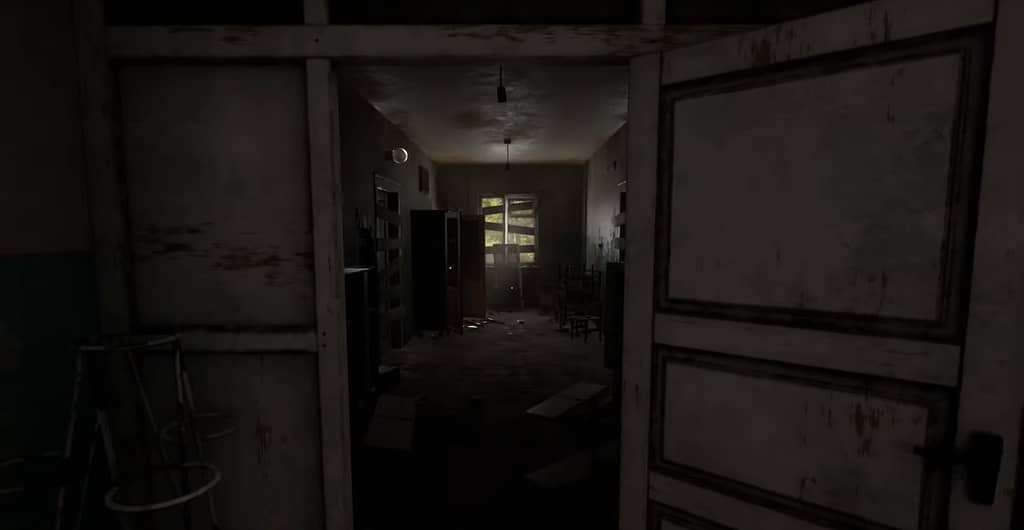
Sad as it is to say, I’m afraid that Summer of ’58 hides a somewhat tragic backstory. You see, I first discovered this hidden gem when a controversy surrounding the title went semi-viral on Twitter… This wasn’t the traditional sort of gaming controversy that I’d come to expect, however, regarding asset flips, microtransactions, a buggy release or anything along those lines… No. This was a controversy caused exclusively by the players.
Back in August 2021, a statement was released on Summer of ’58 developer EMIKA_GAMES’ Twitter page, which featured some surprising and disheartening news. Here, the developer revealed that because Summer of’ 58 was such a short experience; A large number of players had been completing the entire game, leaving a positive review, and then exploiting Steam’s playtime policy to get full refunds, leaving the developer with nothing but exposure for all their hard work…
“I’m leaving game development for an indefinite time to collect my thoughts.” Proclaimed the post, “… I do not earn anything to create a new game.“
You can read the brief —yet heart-breaking— full statement here… Of course, upon hearing this, I leapt at the opportunity to pick up the game and support the developer in what little ways I could.
As you might expect, this led me to discover that Summer of ’58 was an extremely effective horror game with some very smart scares and a deeply oppressive sense of atmosphere. I’d rather not say anything more about the game itself — It’s extremely cheap and wholly enjoyable, so why not go pick it up and help show your support? I can’t imagine that you’d regret it.
Thankfully, EMIKA_GAMES have recently returned to the industry, giving game development one last shot with their newly released title, “Father’s Day”; The success or failure of which will determine the definitive future of their career. I’ll no doubt be picking that one up as soon as possible, and hoping it succeeds beyond their wildest expectations.
9 Hours, 9 Persons, 9 Doors
Row 3, Column 6
Time Played: 24 hours, 20 minutes
![9 Hours, 9 Persons, 9 Doors Image descriptor: A screenshot from 9 Hours, 9 Persons, 9 Doors, which shows a close up image of a speaker in the corner of the room. A speech box sits beneath, showing dialogue from the character Zero. It reads: "The [Nonary Game]. It is a game... Where you will put your life on the line."](https://mlov4no3la6c.i.optimole.com/w:1024/h:576/q:mauto/ig:avif/f:best/id:5ec9808d779fe2d769912081d475bd70/https://sassygamers.com/9-Hours-9-Persons-9-Doors.png)
Created by the twisted minds at Spike Chunsoft, 999 is the first entry in the Zero Escape series, also referred to as the Nonary Games. Initially released for the Nintendo DS in 2009 —but since ported to PC— it tells the tale of Junpei, who finds himself aboard a gigantic cruise ship where he is forced to play a life-or-death game alongside 8 other people; All whilst adhering to the strict rules of a mysterious masked figure who goes by the name of Zero.
This may sound somewhat familiar, and no: I don’t mean that in terms of a small-scale Squid Game. I refer, of course, to Spike Chunsoft’s Danganronpa series and its 16-person killing game, to which 999 is often considered the progenitor. Despite the similarities, each series has enough individuality to make them feel separate and distinct, with each one feeling unique in their own way. Danganronpa may have a multitude of life-sim mechanics and court-based shenanigans, but 999 feels more like a collection of traditional escape room scenarios.
Solving some exceptionally difficult puzzles and plunging yourself ever deeper into the labyrinthian ship upon which you’re being held: 999 places fascination and intrigue above any scares or ambience, taking a more logical and detective-like approach to its concepts, rather than centring horror. Bolstering its unique nature is a well-crafted decision system, which branches the game’s story at various key moments to a total of 16 different end-points. Through trial and error or logical deduction: It’s up to you to determine the correct sequence of events and make the right decisions, in the hopes of reaching a positive outcome.
It’s well-written and excellently voiced, featuring remarkably intelligent puzzle design to sustain its densely packed mystery. I find it to be an easy recommendation for any anime and puzzle fans with a penchant for themes of despair. Even better — the Steam version of 999 comes with a copy of its high quality follow-up, Zero Escape: Virtue’s Last Reward; With the final game in the series also being available on the same platform, which is something of a rarity when it comes to ports of handheld games. Go ahead and check it out.
Pony Island & Inscryption
Row 5, Column 5, & Row 1, Column 4
Time Played: 14 hours, 36 minutes
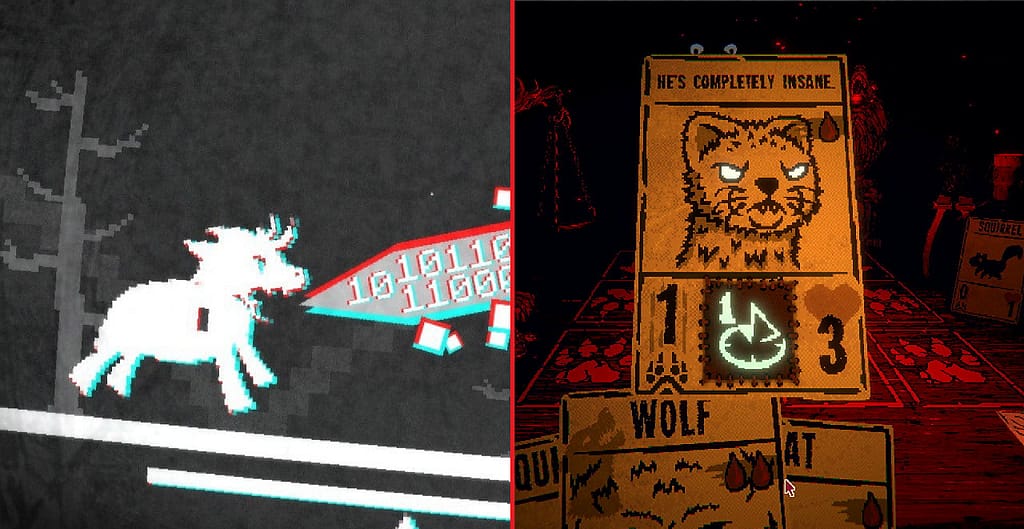
Entirely different mechanically, yet still considered to be birds of a feather: It felt only right to pair Pony Island up with Inscryption on this list, given that they both originated from the genius mind of Daniel Mullins. As a developer, he excels at creating metafictional narratives that blur the lines between video games and reality, often breaking the fourth wall in order to unveil additional layers to his narratives. Pony Island and Inscryption are both perfect examples of this.
In fact, I feel it would be inadvisable of me to tell you much about them, given that it may detract from the experience if you ever decide to give them a go. As such, I will only say one thing about them: The name Pony Island is a complete misnomer in how joyous and positive it sounds. There are much deeper, more sinister goings on behind the scenes, which must be seen to be believed. Meanwhile: Inscryption is a deckbuilding card-based adventure game with a lot of depth beneath the surface, including roguelike elements, puzzles, and plenty of secrets to be found.
I adored playing both of these titles, particularly due to how unpredictable they felt at each and every turn. They certainly tick all the boxes to be considered high quality psychological horror experiences, but the depth and variety of their mechanics make them exceptionally good games too. Be warned though that once you’ve started playing through them: You’re not going to want to stop for even the smallest of breaks!
Prey (2017)
Row 4, Column 3
Time Played: 24 hours, 40 minutes

Our first encounter with sci-fi horror within this Ominous October is quite the spectacle indeed. As a series, Prey has a rather tortured history behind it, beginning with a 2006 game that went by the same name, made by Human Head Studio. Whilst a sequel to it known as Prey 2 was in the works for a number of years afterward; it was cancelled in 2014 due to a developmental nightmare, caused by the Intellectual Property of the series being moved from 3D Realms to Bethesda Studios.
At that point, Arkane Austin put Prey (2017) into development, not as a sequel or reimagining of the 2006 original, but as a completely unrelated experience that just so happened to share the same name and IP. It was, however, intended to be viewed as a spiritual successor to LookingGlass Technology’s System Shock franchise, albeit designed as a sci-fi reinterpretation of Arkane’s 2002 fantasy title: Arx Fatalis…
Are you with me so far? Because that is one Hell of a confusing situation, and I certainly wouldn’t blame you if you found it too hard to follow!
With such a cluttered development cycle behind it, you’d be forgiven for expecting Prey (2017) to be bad. Fortuitously, it is anything but, as many view this game to be something of a masterpiece; A position I wholeheartedly agree with. Set aboard the abandoned hallways of the Talos I space station, Prey (2017) is an RPG stealth-action hybrid with plenty of horror to boot. It blends complex storytelling with a huge number of intricate gameplay mechanics, in order to create a thoroughly immersive experience from start to finish.
But don’t just take my word for it, listen to what Lily has to say, as she was in control for this one;
“Prey is fantastic. I’d say it’s arguably one of the best survival horror games I’ve ever played, very nearly matching the quality of Dead Space 1 & 2. It can be legitimately creepy at times, but the horror feels subtle for the majority of the experience, never overpowering the in-depth RPG focus. Gunplay also felt very good, with an excellent upgrade system making it feel even better. Admittedly, the experience can feel a little bit silly at times when you’re transforming into mugs and teleporting about the place, but these unique abilities always feel purposeful and justified within the context of the story. I’d love to see an actual sequel to Prey sometime in the future.”
Call of Cthulhu (2018)
Row 4, Column 4
Time Played: 11 hours, 13 minutes
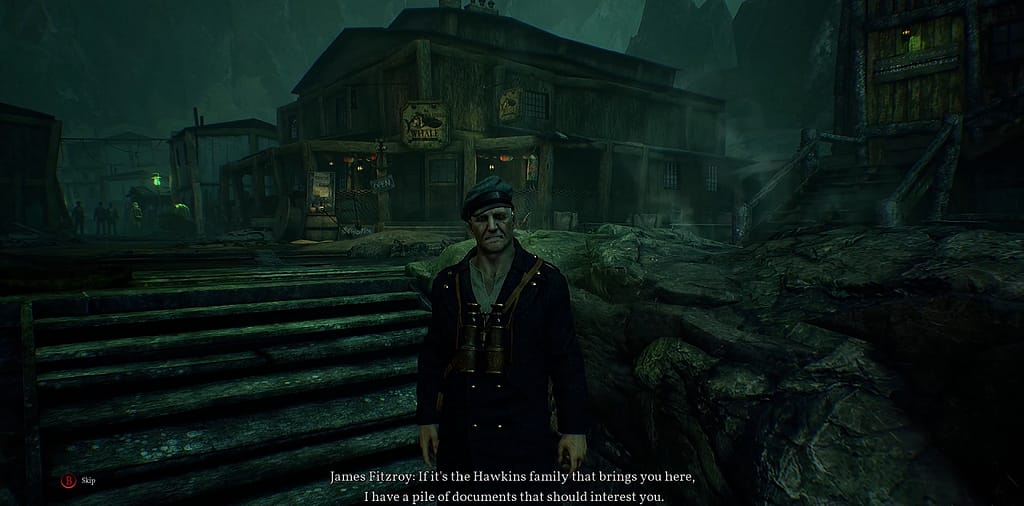
With a much more linear story and a less ambitious suite of gameplay mechanics, Call of Cthulhu is another stealth-oriented RPG; This time inspired by the H. P. Lovecraft story and the 1981 Table-Top Role Playing Game of the same name. It follows the tale of Edward Pierce; a PI tasked with investigating a house fire on Darkwater Island, which tragically claimed the lives of famous painter Sarah Hawkins, her husband Charles, and their young son Simon.
As is rather typical of a Lovecraftian story, events then quickly descend into a twisted tale of eldritch horrors and questionable sanity. It’s an entertaining adventure with good pacing and plenty of tonal diversity surrounding its core mystery, though it can admittedly feel quite lacking at times in terms of your investigative abilities and their subsequent consequences.
Sanity effects and branching storylines were focused on quite heavily in the marketing for Call of Cthulhu —alongside how your character’s stats would alter them— yet these mechanics aren’t exactly prevalent in the final product. There are 18 Sanity effects that can occur throughout the game, with each one altering Edward’s overall mental state and the ending you unlock as a result. These are encountered or avoided based on how you level up your character. For example, a higher Eloquence level may allow you to talk your way past a guard, thus avoiding having to sneak through an alternate passage and encountering a Sanity effect as a result.
The issue is that this example sums up every variation that the RPG systems can provide. You’ll always solve the core mystery no matter how you play the game, and as such: You’ll always reach the exact same end-point, only for the Sanity effects you encounter along the way to determine which ending will then occur… It’s an enjoyable game with a somewhat fun story —I do feel confident in saying that— but Call of Cthulhu constantly pretends to be a large-scale RPG that rivals the original tabletop game in terms of mechanical freedom when it unequivocally doesn’t.
Nevertheless, Lily has plenty to say about this one too;
“As a fan of the original pen and paper game, I understood going in that video game adaptations of Lovecraftian Table-Top games tend to be a little rough around the edges… Nevertheless, I was pleasantly surprised by Call of Cthulhu. I do agree with Cassie that the RPG mechanics are superficial and don’t actively change much, but they do make you feel like you’re building your character to play exactly how you’d like. It may just be an illusion that implies the RPG system is deeper than it actually is, but I liked it. Different people will get varying levels of satisfaction out of it depending on their pre-existing knowledge when going in. For me personally? The illusion was a success.“
So, would I recommend Call of Cthulhu? Yes, but with a caveat that I could only recommend it at a discounted price… Regardless of how enjoyable the story and atmosphere can be, its flaws and simplicity certainly hindered the experience when it came to the RPG systems; At least for me, personally. Lily, on the other hand, found them to be more than expansive enough to prove enjoyable, so I’d say this is an open and shut case of “your mileage may vary.”
Happy Game
Row 1, Column 2
Time Played: 1 hour, 52 minutes
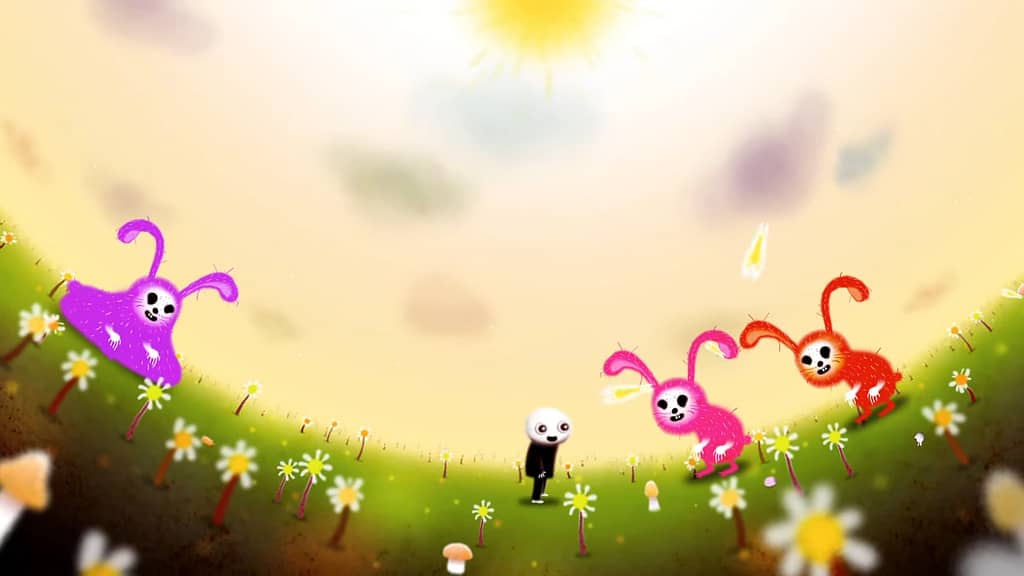
Here’s another extremely short experience that I can’t say much about. Happy Game is a basic puzzle game with an extremely surreal, bizarre and borderline psychedelic setting. You play as a young boy, journeying through three separate nightmares that feature visceral gore, traumatic symbolism, and generally disturbing scenes. Unfortunately, you’re going to have to pay close attention to this unsettling visual storytelling, as Happy Game is a completely non-verbal experience featuring no dialogue whatsoever.
I found it to be a good experience for the most part, but some of the puzzles scattered throughout felt far too finicky at times, whilst several examples of the graphic imagery seemed unnecessarily extreme, without adding all that much to the overall atmosphere or narrative. It may well be exactly what you’re looking for as short horror games go, but with an £11.13 price tag compared to its extremely short length —which could easily be completed in the course of a single hour— I fear it’s the first game of this Spookathon that I cannot confidently recommend.
Dread X Collection
Row 2, Column 2
Time Played: 5 hours, 1 minute
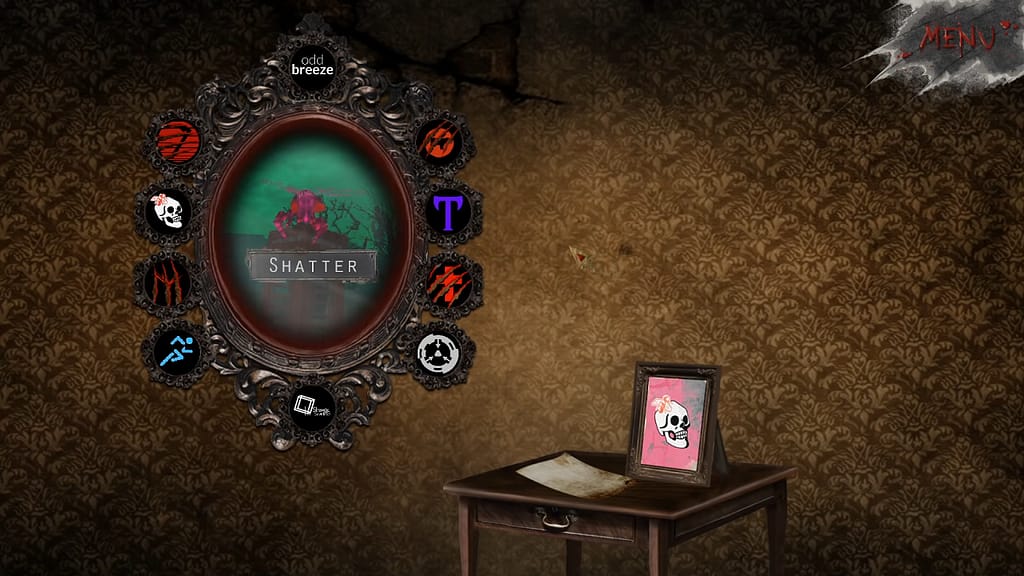
Bursting at the seams due to the sheer amount of thrills and chills contained within, the Dread X Collection consists of ten short horror games, each made from scratch within a 7 day period. The vast majority of these little gems are made by well-respected names in the indie horror community, such as Airdorf, (the creator of Faith), Scythe Dev Team (the group behind the Northbury Grove series and Happy’s Humble Burger Barn), and David Szymanski, (the man who made Dusk), just to name a few!
As a result, the games found within the first Dread X Collection are extremely varied and usually very amusing to play through. There’s The Pony Factory: A first-person shooter with limited resources where you must navigate an abandoned factory full of skeletal ponies. There’s Shatter: A short-form PSX tribute game where you explore the post-apocalyptic ruins of a hornet-infested Britain. There’s even Don’t Go Out: A grid-based card game about surviving the night against a number of mysterious encroaching horrors.
Suffice to say, Dread X Collection has a lot of good experiences to offer —ranging from the creepy to the hilarious— and I enjoyed just about every single one of them. The concept alone is ingenious and well executed, growing even better in each subsequent collection, Wherein the framework gets expanded upon, and the tight 7-day development window is increased to a broader 10 day period, allowing for games with far more polish.
This is definitely one of my biggest recommendations from the fourth Ominous October Spookathon, not least of all because of how good it is in terms of value. At only £5.19, despite having so much hard work put into it, (and with plenty of subsequent collections and spin-offs to keep you invested): The Dread X series couldn’t be a more worthwhile investment for any and all fans of indie horror gaming!
Metroid Dread
Row 4, Column 2
Time Played: 11 hours, 13 minutes

Metroid and Metroid Prime are two series I know absolutely nothing about. They may have been going since 1986 and 2002, respectively, but they never really crossed my radar, and as such: I never went out of my way to play them… Lily on the other hand, has played the vast majority of Metroid games in both the classic and Prime series. So —when given the opportunity— she leapt at the chance to add Metroid Dread to this Ominous October Spookathon! With that in mind, I feel it’s best to refer to her expertise when it comes to Metroid Dread;
“Metroid Dread is one of the best games I’ve ever played, and actually ended up being my Game of the Year for 2021. It manages to create a genuine sense of dread each time you go up against an E.M.M.I.; Enemy variants that cannot be defeated until specific upgrades are collected, and cannot be evaded without perfecting your knowledge of the game’s core mechanics.”
“I’d argue it has some of the best Metroidvania level designs to date, as exploring each biome feels phenomenal, With the upgrades that help you traverse each zone being extremely varied and fun to use. The boss fights were the biggest highlight for me personally, particularly the final boss, which culminated the story, pacing and overall tension perfectly; Quickly becoming one of my favourite encounters in gaming history!”
Guise of the Wolf
Row 4, Column 1
Time Played: 2 hours, 10 minutes
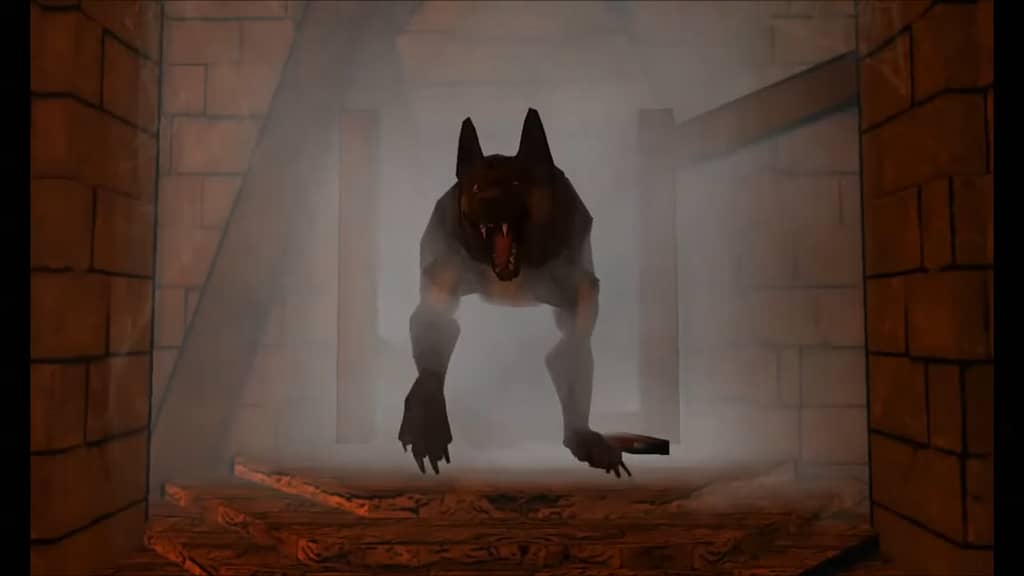
It’s time for me to do something that I am extremely good at: Scraping the bottom of the barrel! Guise of the Wolf might just be one of the most inept, broken, ugly, and generally poorly made games that I’ve ever had the luxury of playing. If you’ve read any of my articles before then you may be aware that I have something of a soft spot for games that are so monumentally bad that they cycle back around to being entertaining again. Guise of the Wolf is a flawless example of this.
Mostly Negative reviews on Steam —standing at 36 out of 100 at the time of writing— are usually a good indicator that you should stay away from a game, yet in my eyes, they represent an opportunity to have a bafflingly hilarious new adventure! There isn’t actually much to do in Guise of the Wolf; You go to a castle to stop a werewolf, become a werewolf yourself, then meander about looking for a cure whilst occasionally getting chased or attempting to solve overly complicated puzzles.
No, the objectives may not be up to much, but the actual quality of any given part of this travesty is so mind-shatteringly absurd that it becomes legitimately captivating. The awkward gliding animations of the werewolf, the dreadful voice acting, the guards who shout “helps to have a map!” over and over whilst you pick-pocket their money without them ever noticing, even when you’re stood directly in front of them… It all comes together to form an unforgettable, surrealist experience — As if the game were some sort of unorthodox social experiment rather than an actual video game.
I’m not going to recommend Guise of the Wolf to you… Hell, I wouldn’t recommend Guise of the Wolf to anybody. But if you’re the type of gamer that enjoys those messy, worst-of-the-worst indie games that only found fame due to their atrocious quality, then this is a title that you’ll certainly want to look into!
Maid of Sker
Row 6, Column 5
Time Played: 4 hours, 45 minutes
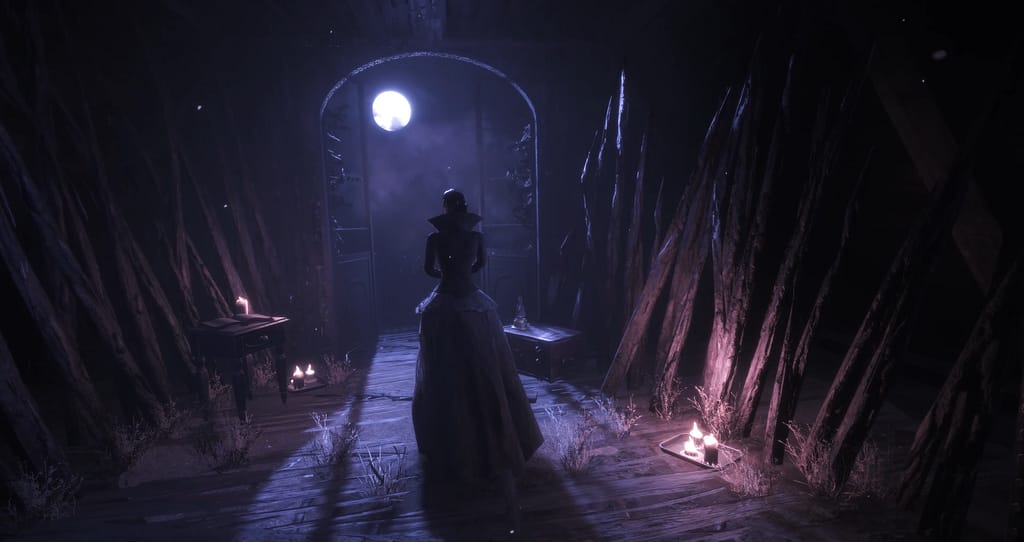
From one of the two teams behind the delightful murder mystery “The Shapeshifting Detective”, comes Maid of Sker — an excursion (no pronunciation pun intended) into Welsh folklore. It’s a gameplay concept that we’ve seen a thousand times before: A first person horror game with lots of hiding and little-to-no combat, where producing sound is guaranteed to get you killed.
Confined within the hotel grounds of the isolated Sker House, you’ll find yourself tiptoeing around the Quiet Ones, a cult of blind entities that really aren’t happy about you being there. Throughout the experience you’ll be sneaking around, using sound to your advantage in order to distract enemies, and occasionally using a mechanical device to temporarily deafen your foes, giving you a better chance to flee and survive.
Gameplay aside, Maid of Sker leans quite strongly into its Welsh horror inspirations. It weaves a fascinating and creepy tale based upon a number of British and Welsh folk stories, the adaptations of which work heavily in the game’s favour. They build upon its ambience and lore in a number of interesting ways; The enthralment is furthered still by the gorgeous and highly detailed environments that you must traverse, which prove to be consistently immersive and beautiful to behold.
Yet, I feel that the generic nature of Maid of Sker’s rather repetitive hide-and-seek gameplay detracts from the experience to a significant degree. Every single time I found myself engrossed within the narrative, I felt my enjoyment numbed at the thought of having to re-tread my steps once again…
The gameplay conceit of passing by enemies that I’d already circumvented countless times before (often getting caught in the process and having to replay huge swathes of the experience due to the infrequency of save points), felt more akin to an endurance test than a good time… It’s a game I truly wanted to love —and still do in a number of ways— but it fought against my enjoyment at every single turn and simply cannot sustain its short-lived campaign on the few disappointing gameplay mechanics that it has to offer. This is a story that deserved far better than the game built around it.
Arkham Horror: Mother’s Embrace
Row 5, Column 3
Time Played: 14 hours, 32 minutes
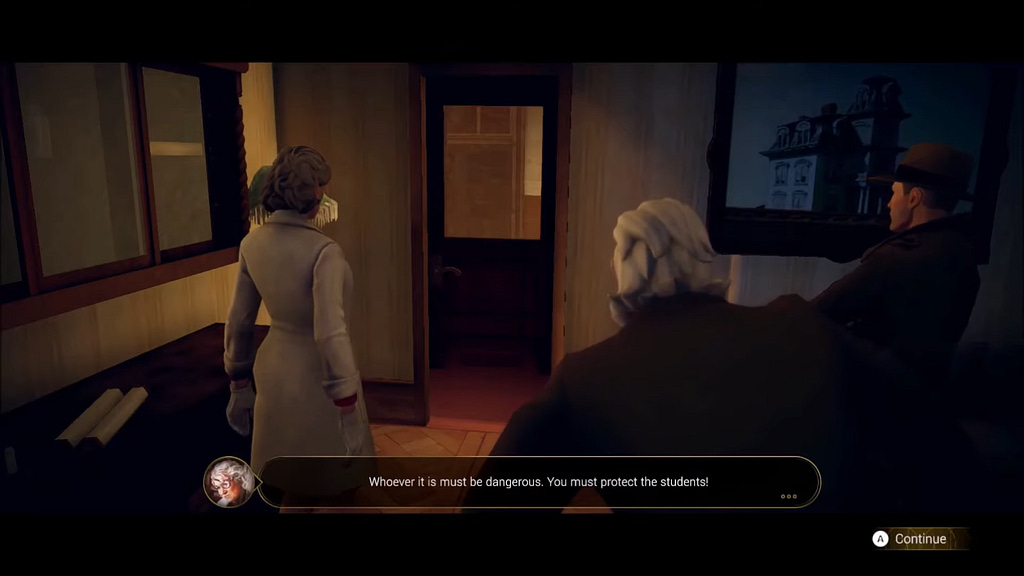
Up next was PrincessLilyMTG’s final game — Arkham Horror: Mother’s Embrace. This one shares a lot in common with Call of Cthulhu (2018), as it isn’t just another game canonically set within the H. P. Lovecraft mythos, but is also based upon an existing set of RPGs; This time upon Fantasy Flight’s Arkham Horror board game and its associated card game!
I found it to be an entertaining enough experience even though it lacked depth at times, as it tended to prioritise fun and enjoyability over the serious tone that Lovecraftian horror tends to aim for. Given that it also provided turn-based combat and a strong focus on resource management, it also felt thematically different enough to retain my attention from start to finish, simply due to how unique it was when compared with the other games of the Ominous October Spookathon.
As Lily was the one on controls, however, she had some far more well-developed thoughts to offer;
“A digital adaptation of one of my favourite board games —which utilises mechanics from the fantastic living card game of the same name— sounds really cool for me, right? Unfortunately, Mother’s Embrace manages to fall short in both its board and card game inspirations, on account of its clunky and somewhat underdeveloped mechanics… However, that didn’t necessarily stop the game from being fun.”
“Puzzles aren’t exactly Arkham Horror’s strong suit due to their simplicity, and the exploration is rather by the numbers, as every single interactive object is highlighted at the push of a button. Skill checks also work on an extremely basic pass / fail system, as you either have the stats for them or you don’t. That’s not exactly ideal when a lot of the random mythos effects are based around pure RNG, which can lock you into fail-states that force you to reload your save.”
“The combat is perfectly serviceable, though —it almost feels like a true tactics RPG— but since you’re offered so many resources at every single turn: You never really struggle or find any real challenge throughout the campaign. This definitely hurts the life-or-death situations you’re supposed to find yourself in, making them far lower stakes than they ought to be. Honestly, it just left me wishing for a more fleshed-out game all around… It legitimately is an enjoyable adventure —I really don’t think I’m getting that across— it’s just far too basic and simple and could’ve been a lot better with more development time.”
Deadlight
Row 6, Column 2
Time Played: 5 hours, 15 minutes
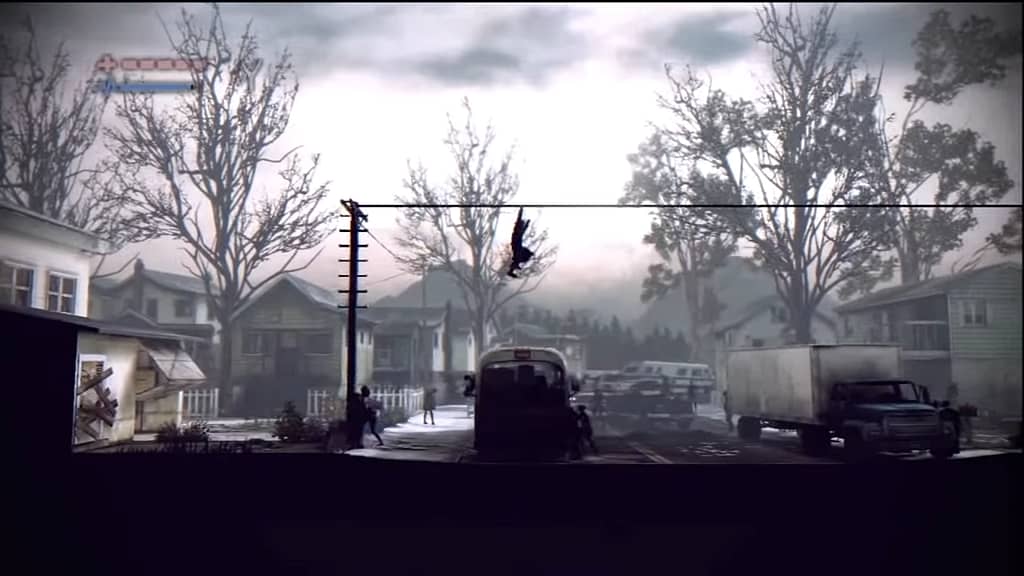
Deadlight means a lot to me, as it was one of the first indie horror games I picked up for my initial foray into PC gaming, alongside Lone Survivor, Ib, Cry of Fear and Slender: The Eight Pages; All back in 2012. It’s a 2.5D side-scrolling stealth-action game where you take on the role of Randall Wayne, a former park ranger in the midst of zombie-infested Seattle, back in the year 1986.
The premise is fairly typical and will feel extremely familiar to any fans of zombie media: Randall has been separated from his wife and daughter, and is going to travel across the entire country in order to find them. To accomplish this grand task, he’ll climb across rooftops, sneak through sewers, and fight his way through streets and buildings against both zombies and survivors alike… You get the idea.
Trite though it may be, Deadlight does a good job at executing each of these ideas. Encounters are carefully crafted to support both aggressive and defensive playstyles, with plenty of chase sequences, puzzles and parkour segments interspersed to keep things feeling fresh and interesting. It never overstays its welcome, the controls feel intuitive and satisfying to use, and over ten years since its release: It’s often very cheap in Steam’s various sales. So go ahead and pick it up; It’s not exactly a difficult recommendation when you can usually buy it cheaper than a cup of coffee.
Dark Pictures Anthology: House of Ashes
Row 5, Column 1
Time Played: 8 hours, 31 minutes
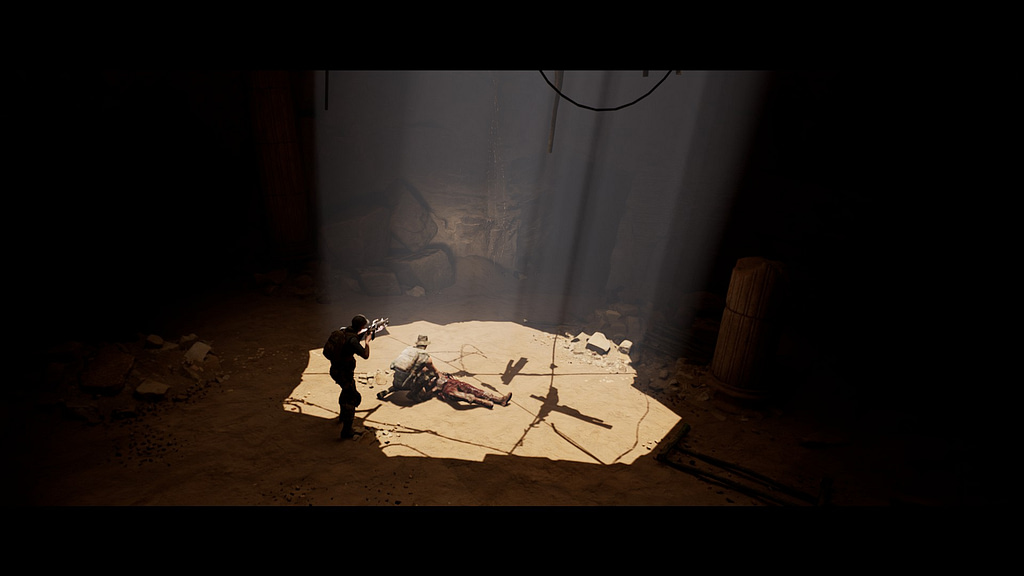
Finally, let’s talk briefly about the last game of this Ominous October Spookathon. Honestly, it’s a little hard to say anything about House of Ashes that I haven’t said before, as I spoke about it extensively in this article right here, where I gave it fifth place in my top ten games list for 2021.
Another phenomenal hidden gem by Supermassive Games; It joins Until Dawn, Man of Medan, Little Hope and The Quarry, as one of the best cinematic thrillers of all time. It subverts the expectations that its gung-ho militaristic characters create, it toys with a number of classic horror concepts, and it offers plenty of replayability due to the large number of ways that your choices can actually matter; Branching the narrative down such drastically different paths to make it feel like a true, authentic survival experience.
I can only imagine what The Devil In Me (the next game in the Dark Pictures Anthology series) will have to offer when it comes out in less than a month’s time. As it stands: Supermassive Games feel like one of those rare development teams that can do no wrong, so to say I’m excited would not only be a huge understatement but would also do a major disservice to how much entertainment they’ve provided in the past. As such: My hopefulness is truly immeasurable!
Conclusion
With that, our event has ended. But you may be wondering to yourself: Is this it? Is it really over? Is the Ominous October Spookathon truly done and gone..? With a name like “The Final Chapter”, it certainly does sound that way, doesn’t it? It definitely implies that the fourth Ominous October Spookathon event is the endpoint of this four-year-long extravaganza for the ages…
But I’ll let you in on a little secret. Do you know of any other horror franchise that purported to be ending with its fourth entry? Because I sure do… Friday the 13th – Part IV: The Final Chapter! And do you know how much longer that series went on after its intended finale? Yep, that’s right: EIGHT. MORE. FILMS.
I’m sorry, my friends, but the Ominous October Spookathon is far from over, even with its final chapter subtitle. ‘Tis but an obscure reference to create a last minute plot twist; The likes of which would feel a tad far-fetched even within the final minutes of a Saw movie. I do promise not to mislead you again, though… At least, not intentionally.
The good news is that the Ominous October Spookathon is still going strong. Part V is coming to an end as I write these very words, and Part VI is already embarrassingly far along in its development, with a number of horror games already shortlisted for 2023. You can look forward to hearing all about them next year, when the dreaded spookiness descends upon us once again.
In the meantime, though: Happy Halloween. Best witches to you all; I hope you have a bootiful time and a truly fang-tastic night. Sending lots of hugs and kisses (or, like, bugs and hisses?), from me: SpookableCassie.